The history of science has often seen women’s work overlooked and their credit stolen
Ian Tucker
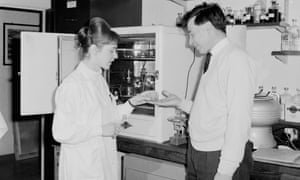
Embryologist Jean Purdy left, with physiologist Prof Sir Robert Edwards in their research laboratory in Cambridge, 1968. Photograph: Central Press/Getty Images
Jean Purdy
Contemporary letters revealed this week that a key figure in the birth of the first IVF baby in 1978, embryologist and nurse Jean Purdy, was excluded from a plaque at the Oldham hospitals involved. Attempts by one of the two men credited with the discovery, Prof Sir Robert Edwards, to include her name were rebuffed by the local health authorities. Edwards was later awarded a Nobel prize.
Jocelyn Bell Burnell
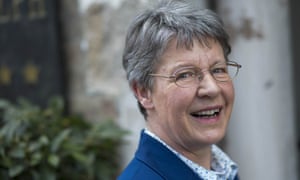
FacebookTwitterPinterest
Dame Jocelyn Bell Burnell in 2017. Photograph: David Hartley/Rex/Shutterstock
The British astrophysicist was a PhD student when she discovered repeating pulses of radio waves after studying months of radio telescope data. These became known as pulsars – spinning neutron stars which weigh more than the sun. Burnell’s supervisor, Antony Hewish, was credited with the discovery and awarded a Nobel in 1974.
Rosalind Franklin
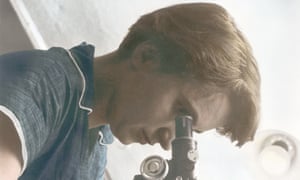
FacebookTwitterPinterest
Rosalind Franklin, whose images were crucial to discovering the structure of DNA+. Photograph: Science History Images/Alamy Stock Photo
Jim Watson and Francis Crick are widely credited with discovering the structure of DNA. However Franklin’s X-ray crystallography data was key to the duo’s discovery. Whether they stole her data or merely used publicly available data without her permission is a moot point, but it is generally accepted that when Crick and Watson were awarded a Nobel in 1962, had Franklin been alive, she ought to have been included.
Lise Meitner
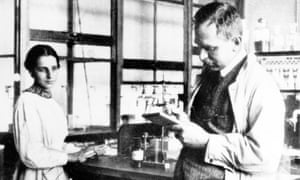
FacebookTwitterPinterest
Lise Meitner with Otto Hahn at Kaiser Wilhelm Institute for Chemistry in Berlin, c1935. Photograph: Pictorial Press Ltd/Alamy Stock Photo
Along with Otto Hahn and Otto Robert Frisch, the Austrian-Swedish physicist was part of a trio who discovered the nuclear fission of uranium in 1939. This led to the development of nuclear weapons in the second world war, and later the generation of electricity from nuclear reactors. Meitner was nominated for a Nobel many times but it was Hahn who received the award in 1944.
Alice Ball
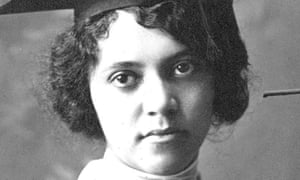
FacebookTwitterPinterest
Alice Ball, whose work went uncredited for decades. Photograph: Alamy
While at the University of Hawaii in the early 20th century, Ball worked on a treatment for leprosy (a big problem at the time in Hawaii). She died at the age of 24 and another chemist later took credit for her work – for several decades her treatment was known as the Dean method. Ball was the first woman and first African American to receive a master’s at the university, and also its first female chemistry professor.
– for several decades her treatment was known as the Dean method. Ball was the first woman and first African American to receive a master’s at the university, and also its first female chemistry professor.
Ian Tucker

Embryologist Jean Purdy left, with physiologist Prof Sir Robert Edwards in their research laboratory in Cambridge, 1968. Photograph: Central Press/Getty Images
Jean Purdy
Contemporary letters revealed this week that a key figure in the birth of the first IVF baby in 1978, embryologist and nurse Jean Purdy, was excluded from a plaque at the Oldham hospitals involved. Attempts by one of the two men credited with the discovery, Prof Sir Robert Edwards, to include her name were rebuffed by the local health authorities. Edwards was later awarded a Nobel prize.
Jocelyn Bell Burnell

FacebookTwitterPinterest
Dame Jocelyn Bell Burnell in 2017. Photograph: David Hartley/Rex/Shutterstock
The British astrophysicist was a PhD student when she discovered repeating pulses of radio waves after studying months of radio telescope data. These became known as pulsars – spinning neutron stars which weigh more than the sun. Burnell’s supervisor, Antony Hewish, was credited with the discovery and awarded a Nobel in 1974.
Rosalind Franklin

FacebookTwitterPinterest
Rosalind Franklin, whose images were crucial to discovering the structure of DNA+. Photograph: Science History Images/Alamy Stock Photo
Jim Watson and Francis Crick are widely credited with discovering the structure of DNA. However Franklin’s X-ray crystallography data was key to the duo’s discovery. Whether they stole her data or merely used publicly available data without her permission is a moot point, but it is generally accepted that when Crick and Watson were awarded a Nobel in 1962, had Franklin been alive, she ought to have been included.
Lise Meitner

FacebookTwitterPinterest
Lise Meitner with Otto Hahn at Kaiser Wilhelm Institute for Chemistry in Berlin, c1935. Photograph: Pictorial Press Ltd/Alamy Stock Photo
Along with Otto Hahn and Otto Robert Frisch, the Austrian-Swedish physicist was part of a trio who discovered the nuclear fission of uranium in 1939. This led to the development of nuclear weapons in the second world war, and later the generation of electricity from nuclear reactors. Meitner was nominated for a Nobel many times but it was Hahn who received the award in 1944.
Alice Ball

FacebookTwitterPinterest
Alice Ball, whose work went uncredited for decades. Photograph: Alamy
While at the University of Hawaii in the early 20th century, Ball worked on a treatment for leprosy (a big problem at the time in Hawaii). She died at the age of 24 and another chemist later took credit for her work
 – for several decades her treatment was known as the Dean method. Ball was the first woman and first African American to receive a master’s at the university, and also its first female chemistry professor.
– for several decades her treatment was known as the Dean method. Ball was the first woman and first African American to receive a master’s at the university, and also its first female chemistry professor.